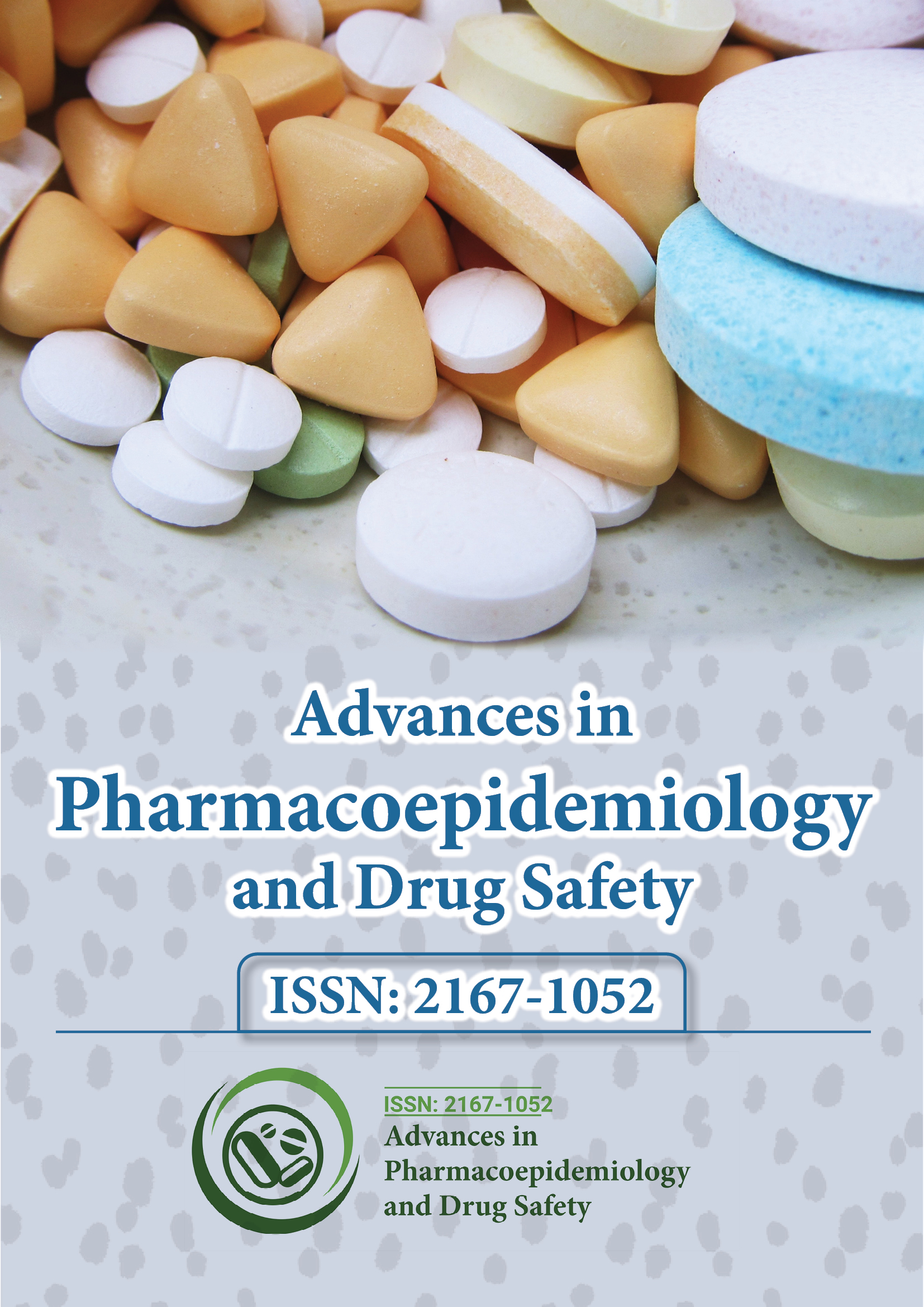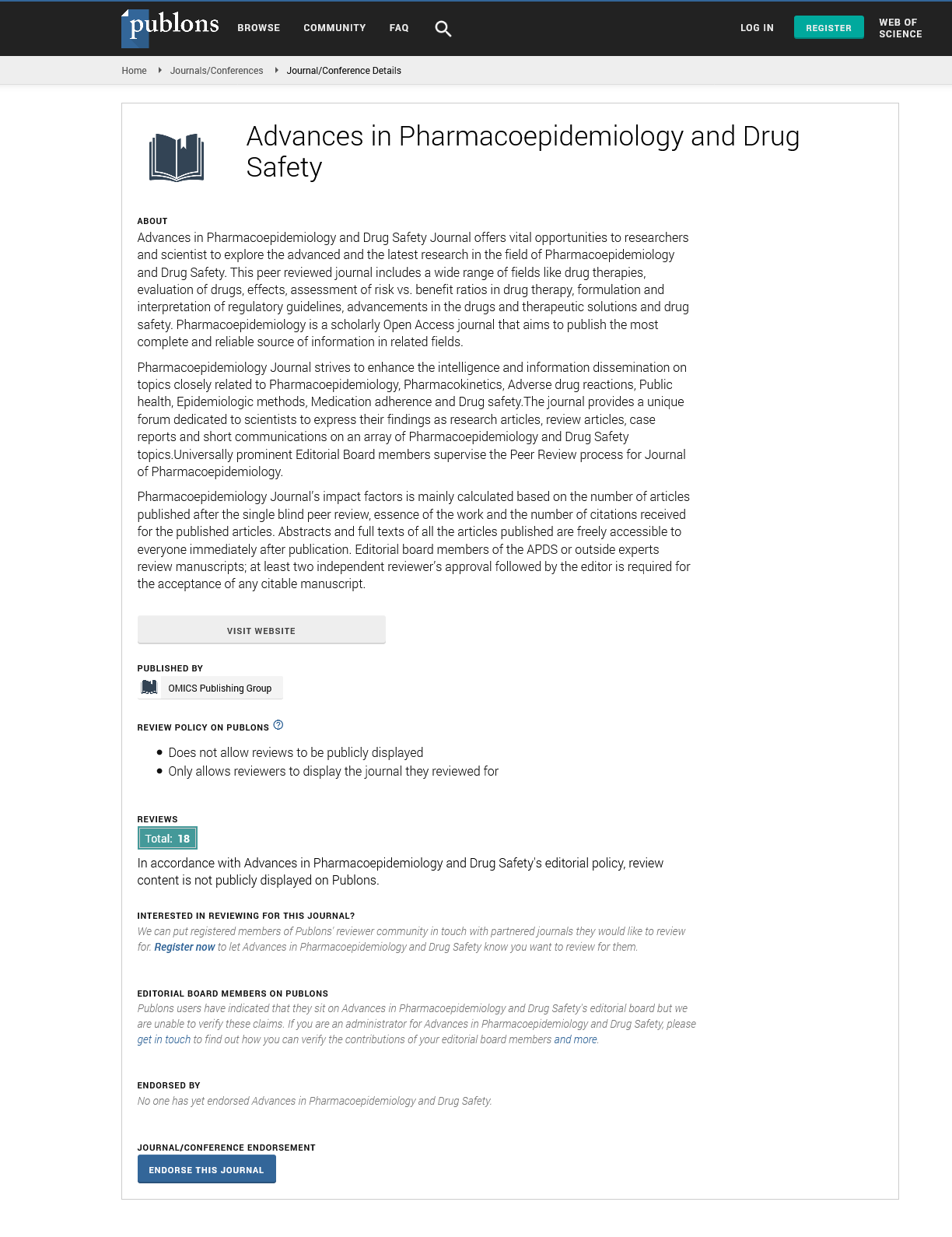Indexed In
- Open J Gate
- Genamics JournalSeek
- Academic Keys
- JournalTOCs
- RefSeek
- Hamdard University
- EBSCO A-Z
- SWB online catalog
- Publons
- Geneva Foundation for Medical Education and Research
- Euro Pub
- Google Scholar
Useful Links
Share This Page
Journal Flyer

Open Access Journals
- Agri and Aquaculture
- Biochemistry
- Bioinformatics & Systems Biology
- Business & Management
- Chemistry
- Clinical Sciences
- Engineering
- Food & Nutrition
- General Science
- Genetics & Molecular Biology
- Immunology & Microbiology
- Medical Sciences
- Neuroscience & Psychology
- Nursing & Health Care
- Pharmaceutical Sciences
Commentary - (2025) Volume 14, Issue 2
Expanding Horizons of Post Marketing Drug Surveillance
Sophia Bennett*Received: 29-May-2025, Manuscript No. PDS-25-29846; Editor assigned: 31-May-2025, Pre QC No. PDS-25-29846; Reviewed: 14-Jun-2025, QC No. PDS-25-29846; Revised: 20-Jun-2025, Manuscript No. PDS-25-29846; Published: 28-Jun-2025, DOI: 10.35248/2167-1052.25.14.392
Description
The evaluation of medications does not end with clinical trials since these controlled experiments cannot fully predict how a drug will function in the broader population. Because of this limitation, post-marketing surveillance has become a crucial aspect of pharmacoepidemiology and drug safety. This continuous process focuses on identifying adverse effects, rare reactions and usage trends that may only become apparent once a drug is widely used. Ongoing monitoring makes it possible to detect safety concerns early and take appropriate actions to protect public health. One of the most important advancements in post-marketing safety efforts is the development of large-scale administrative and prescription databases that contain detailed patient-level information. These data sources allow researchers to track medication exposure over time and associate it with clinical outcomes such as hospital admissions, lab findings and mortality data. By applying advanced statistical tools, experts can determine whether an observed effect is truly caused by a drug or simply coincidental. This distinction is key to ensuring decisions are based on accurate assessments of risk.
A prominent example of effective post-marketing surveillance is the discovery of rare heart-related side effects linked to some antihistamines and antipsychotic drugs. These complications were not visible in initial trials but surfaced once the medications were used by large numbers of people. Thanks to robust monitoring systems, regulatory authorities were able to respond quickly by modifying drug labels and introducing stricter prescribing rules. This helped to reduce further harm and highlighted the importance of continued safety evaluation even after a drug is approved for use. Global cooperation has also improved the effectiveness of post-marketing drug monitoring. Regulatory agencies across Europe, the United States, Japan and other regions routinely share safety data to strengthen oversight. When a potential issue is identified in one country, it can be investigated using data from other populations to determine whether the problem is consistent. These collaborative efforts enhance the accuracy of safety evaluations and minimize duplicated work.
The growing use of biologics and vaccines has introduced new challenges in post-market surveillance. Biologics are made using complex cellular methods and may carry unique immunological risks that differ from traditional small-molecule drugs. Vaccines require especially close observation since they are often administered to healthy individuals in large numbers. Even extremely rare side effects can have widespread consequences. Pharmacoepidemiology plays a vital role in tracking the safety of these treatments to ensure that their benefits continue to outweigh potential risks. Beyond identifying harmful effects, post-marketing pharmacoepidemiology is also concerned with assessing long-term treatment effectiveness. Medications that show promising results in trials might perform differently in everyday settings where patients may not always follow their prescribed regimens and where patient demographics are more varied. Studying outcomes in real-world conditions helps determine whether drugs actually deliver the intended health benefits across the full spectrum of users. This evidence assists doctors in refining treatment approaches and helps healthcare systems make better decisions about how to allocate resources.
Advances in digital health technologies have greatly enhanced post-marketing monitoring. Patients can now report side effects directly using mobile apps, offering faster and more personal ways of collecting safety data. Wearable health devices can continuously track indicators such as blood pressure, heart rate and glucose levels, providing real-time feedback on how treatments are affecting the body. These innovations supplement traditional data collection systems and help flag potential issues sooner. However, using digital tools must be balanced with strong ethical safeguards, especially regarding patient privacy and data protection. As treatments become more sophisticated including gene and cell-based therapies, there is a growing need for innovative surveillance strategies. These new therapies often involve long-term effects that may only become clear after several years of use. To support safe implementation, many countries have created national and regional registries that follow patients over extended periods. These registries collect standardized information that informs safety policies and supports regulatory decisions.
In conclusion, post-marketing surveillance is an essential part of the drug life cycle. By integrating observational research, digital technology, cross-border collaboration and patient engagement, pharmacoepidemiology ensures that drug safety is continuously evaluated even after market approval. This ongoing cycle of review not only helps to prevent avoidable risks but also reinforces public trust in the healthcare system. As treatment options continue to expand and healthcare data becomes more comprehensive, the role of post-marketing pharmacoepidemiology will only become more central in guiding safe and effective medical care.
Citation: Bennett S (2025). Expanding Horizons of Post Marketing Drug Surveillance. J Adv Pharmacoepidemiol Drug Saf. 14:392.
Copyright: © 2025 Bennett S. This is an open access article distributed under the terms of the Creative Commons Attribution License, which permits unrestricted use, distribution and reproduction in any medium, provided the original author and source are credited.

